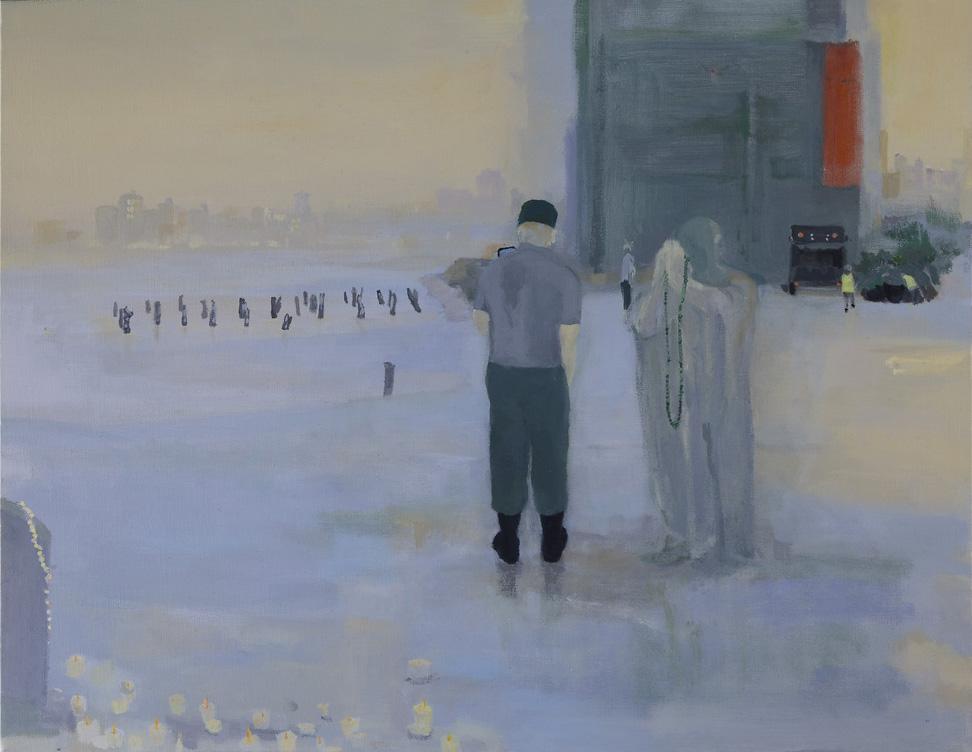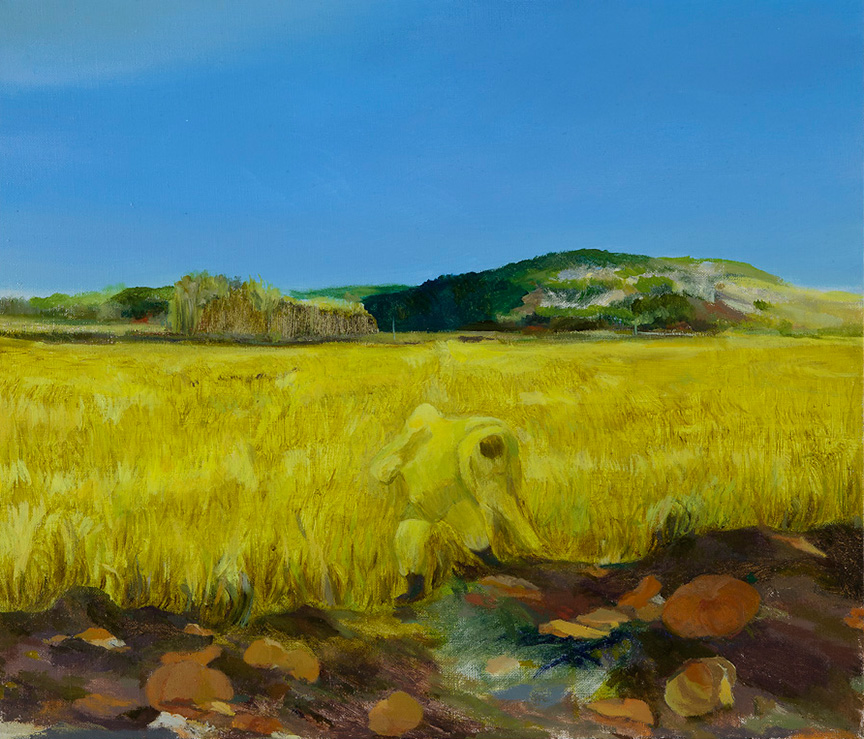Shows
Sejin Park’s “Won-Kyung”


Though Sejin Park depicts the seemingly outdated subject matter of agricultural labor and rural life, her paintings are formally contemporary. “Won-Kyung,” the title of Park’s recent solo exhibition at Doosan Gallery in New York, is the Korean word for “landscape” or “distant view.” It is with distance, even detachment that the viewer looks upon Park’s paintings. By setting up this relationship between the imagery and the viewer, Park addresses these rural scenes to an urban individual—one who is most likely an outsider or stranger.
Showcasing works from the last decade, the show opened with four small, unassuming oil paintings on canvas, and transitioned to the artist’s later, more experimental works. Hudson River: 4 Colors on the NY Street (2012) features two men facing a hazy silhouette of skyscrapers, while Giant Editions No. 23 (2004) zooms in on a concrete, industrial building, with no context for the structure. These two paintings were of the few in the entire exhibition that depicted urban environments. The other two paintings, October (2012) and Daylight (2006), are more conventional landscapes with distinct horizons created by rolling hills or mountains and with foreground consisting of fields, trees and roads. The four paintings signal Park’s versatility as a painter. While Hudson River is mostly painted with broad smudgy strokes of blue and grey, October is rendered in tighter and thicker marks reminiscent of masters such as Paul Gauguin or Henri Matisse. Daylight, unlike the others, is awkwardly painted, appearing to be the haphazard work of an untrained painter or child.

Labor (2004), a large painting made with glue and acrylic on paper, depicts an immense mound of rich, golden beige against a horizon of blue sky. A small donkey stands atop this mound, seemingly unaware of the heap of land underneath itself. A majority of the composition is filled by the golden mass, while the donkey and a sparse growth of trees occupy a small portion of the painting. Upon closer inspection, one can see that the intense layers of all-encompassing brushstrokes that make up the painting hold within them intricately rendered crops and flora. Another large painting called Golden Age (2005) seems to be an extension of Labor, except that the former work contains only the golden mound and not the greenery or sky. Though a golden-yellow hue fills the entire frame, visible brushstrokes make evident that Park used a rather thin brush to cover the whole surface of Golden Age. This work is the result of detailed labor of the hand, wrist and arm, rather than broad movements of the whole body.
From the use of various painting techniques, as well as a combination of multiple perspectives within each work, Park fluctuates between up-close and distant imagery—sometimes so far away that what is being depicted is hardly recognizable. The artist makes her paintings a kind of haven for various perspectives. The sense of un-fixedness dismantles hierarchy and the notion that all things have an assigned or appropriate place in the world.
In Dr. Kim’s One Day (2004), Park also brought together different elements and perspectives, but this time in a setting unlike that of the other exhibited paintings. This was the only painting in the show that depicted an interior setting, with a window that looks out into a rural scenery. Inside this dark room, a boyish cartoon figure stands facing a taller, faceless stone statue, which seems to resemble an older, priest-like authority figure. The priest has his hand on the shoulder of the cartoon figure, from whose head sprouts donkey ears. Perhaps Dr. Kim’s One Day is a prelude to Labor, and the donkey in the latter painting a fully metamorphosed version of the cartoon boy in the former work. The presence of this misfit, cartoon figure tips the balance more blatantly than Park’s landscape paintings. Unlike Labor where the donkey seemed unaware of the space and existence underneath him, Dr. Kim’s One Day depicts a moment and place where different characters and elements not only coexist but seem aware of one another.

Bringing together disparate times and spaces into one work could risk seeming superficial, arbitrary or naive in the way that it does not make necessary distinctions between the different elements. Some of Park’s paintings could therefore appear overly nostalgic, empty or vaguely sentimental. Nevertheless, Dr. Kim’s One Day breaks from those tendencies and approaches Park’s concerns of “un-fixedness” in a bold and articulate manner.
Diana Seo Hyung Lee is a writer and gallerist based in New York City. Her writing has appeared in The Brooklyn Rail, ArtSlant and Degree Critical Blog.







